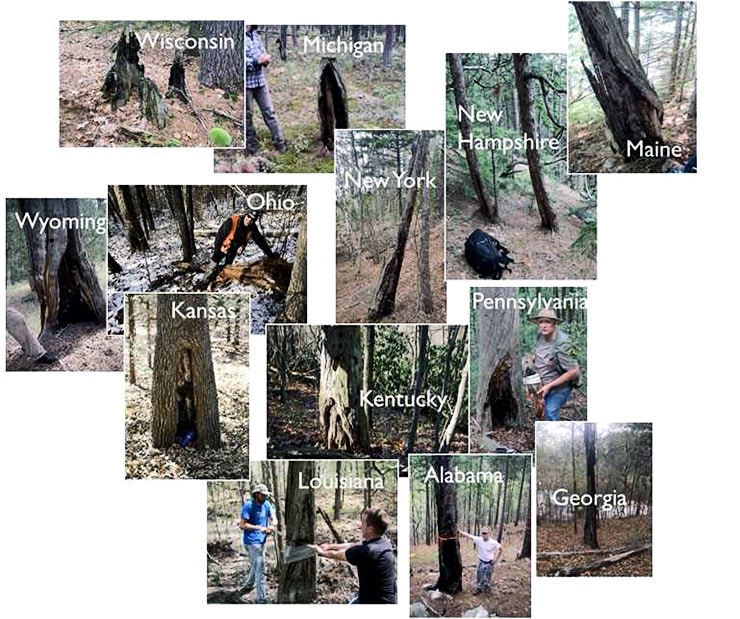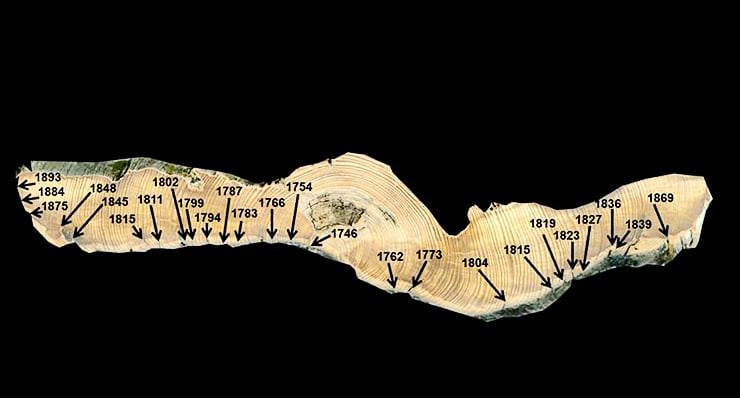A new model for understanding how climate affects wildfire frequency focuses on two variables: temperature and precipitation.
“Development of this model began as a conversation about what is controlling wildfire frequency across the entire United States,” says Michael Stambaugh, an associate research professor in forestry at the University of Missouri.

“Yes, humans can control fire, but the other big driver is climate—and that’s what we were really interested in, particularly in the future. How does climate constrain fire and can we predict it? We started thinking about the physics and chemistry involved in starting a single wildfire and relating that over time,” Stambaugh explains.
“We really think the model is powerful. The next step was moving away from the places where we have validation data and looking at what the model predicted for all temperature and precipitation combinations. We aren’t necessarily interested in where those climate conditions are, but, rather, what does the model say about how frequent wildfires are expected to be in that setting?”
Refining the model
The researchers have continually refined the Physical Chemical Fire Frequency Model (PC2FM) during the past several years, in part through fieldwork, such as gathering fire scar data from old trees. They used fire scars as a measure of when and how frequently fires occurred over long time periods.
While wildfires can’t be fully prevented, scientists can use the model to understand climate’s influence on wildfire probability and where and why it changes across different regions.

“We developed this model using concepts and equations used to predict chemical reaction rates,” Stambaugh says. “We reformulated them for wildfires occurring in forest landscapes. We started to think of ways in which the model could be used to explore the chemistry of wildfires since fire is fundamentally a chemical reaction. For example, in the laboratory, you might want to know how quickly a chemical reaction occurs under specific conditions. In forests, the question is similar; you want to know how often wildfires occur in a particular climate.
“To develop the model, we needed long-term data on how often fires happen in many different places. As we collected more of these data, it was obvious that our model worked really well. We have consulted with many of our colleagues in other parts of the world, and they have been in general agreement,” he explains.
“We’ve constantly been surprised with the accuracy of the model…”
The team has traveled the United States and the world to get a first-hand look at wildfires in different climate conditions, allowing them to gather important information about how the climate and environment of an area can constrain or enhance wildfire occurrence.
“You can see patterns in global wildfire frequency that are obviously predictable,” Stambaugh says. “For example, Greenland doesn’t burn. It’s too icy and wet. It’s on one end of the spectrum. The other end of the spectrum is a place like the Sahara Desert, which doesn’t burn either. It’s too dry and there’s not enough fuel.
“Between those two extremes, we were confident that there was a way to describe the transition,” he says.
Traveling also gave the researchers new data to analyze and ideas for improvement. Long records of wildfires are key to improving the model. The team continually generates new data from their research on historical fires, along with similar data developed from colleagues, to train and validate their model.
How to prep forests for wildfires to come
“Some of the first data used to develop the model were from previous studies that described fire history of a single place,” Stambaugh says. “Many of those places are very climatically diverse. For example, we have data from wet and warm places like Louisiana, wet and colds places like Washington, dry and warm places like Australia. We wanted to include data from a broad range of climate conditions.
“This has allowed us to capture the extremes, show people where different places fit along a gradient of wildfire frequency, as well as the accuracy of our predictions versus what actually happened in the past,” Stambaugh says.
Looking at the past
As the team started plugging temperature and precipitation data into their model, they were encouraged that their model predictions were incredibly similar to actual wildfire patterns.
“We’ve constantly been surprised with the accuracy of the model, particularly considering that it’s not a super complex model,” Stambaugh says. “It’s not a model feeding a model that feeds another model. It’s one model with two variables—temperature and precipitation. The model comes from chemistry and it’s neatly packaged.”
Stambaugh adds that model results provide new information about how wildfire frequency changes and where climate conditions could push wildfire frequency in the future. At a national level, the model could be key for applications such as fire management, wildfire risk and preparedness, guiding wildfire policies, predicting future smoke emissions, etc.
“In the United States, we have put out wildfires so well since the early 1900s that we have few examples of the natural range of variability,” Stambaugh says. “By stamping out fires in the past century, we have lost examples of how climate can influence wildfires.
Sooty specks from wildfires raise air pollution
“Today, there is little expression of that. Many places burned much more frequently in the past. The historical data and this model really shows us how wildfires varied by climate conditions,” Stambaugh explains.
“We see a lot of evidence of past fires on trees through the scars. As a country, if we would have known how frequent fire occurred in the past and how they varied across regions, then we may have chose to do things differently in the past century in terms of forest management, especially in regions that are very prone to frequent or high severity wildfires,” he says.
Stambaugh says the team was already working on wildfire-climate projects for the United States Geological Survey. They were working on producing model estimates and maps of wildfire frequency for future climate scenarios.
The researchers outline their work in a paper in the journal PLOS ONE.
The United States Forest Service, as well as the US Joint Fire Science Program, provided funding for the project.
Source: University of Missouri



